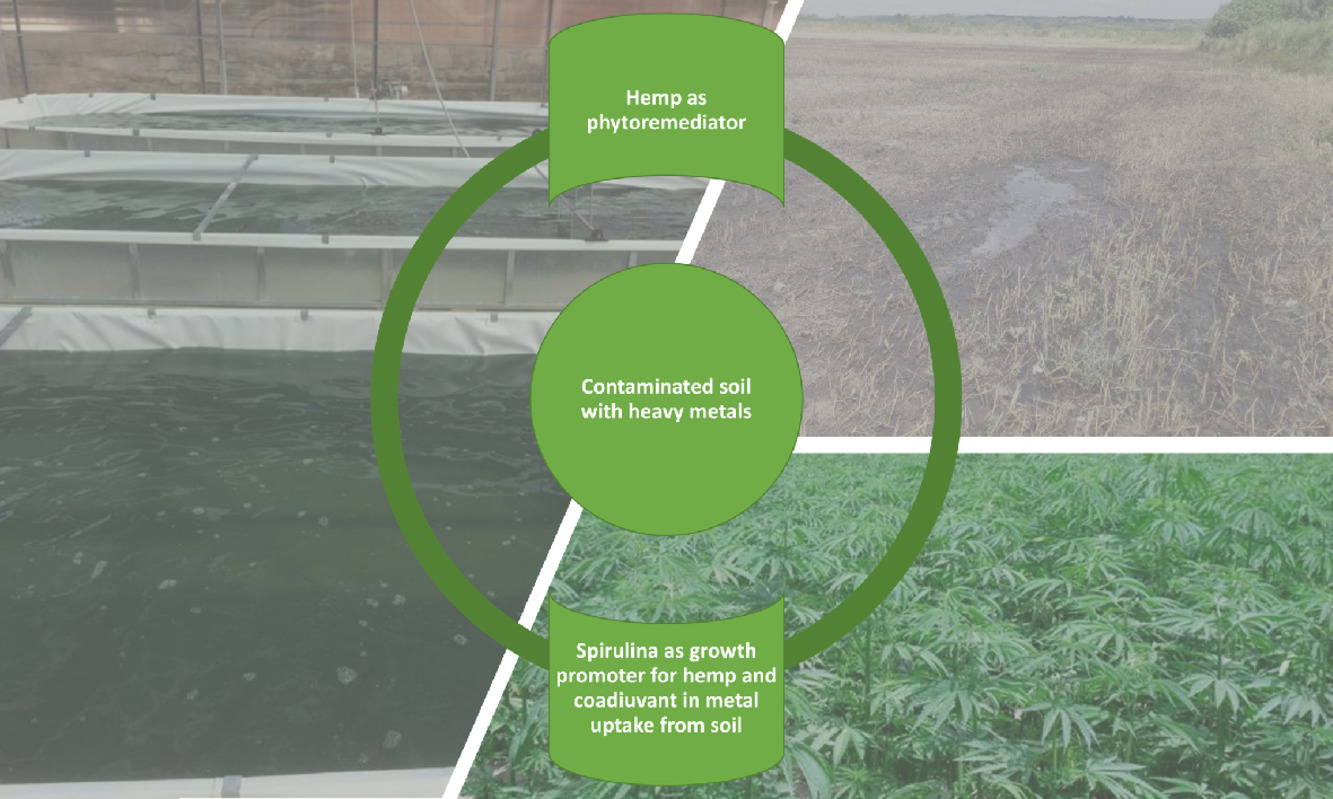Difference between revisions of "Template:Article of the month"
From CannaQAWiki
Jump to navigationJump to searchShawndouglas (talk | contribs) m (Image) |
Shawndouglas (talk | contribs) (Updated article of the month text.) |
||
| Line 1: | Line 1: | ||
<div style="float: left; margin: 0.5em 0.9em 0.4em 0em;">[[File: | <div style="float: left; margin: 0.5em 0.9em 0.4em 0em;">[[File:GA Musio EnviroAdv2022 7.jpg|220px]]</div> | ||
'''"[[Journal: | '''"[[Journal:A spectroscopic study to assess heavy metals absorption by a combined hemp-spirulina system from contaminated soil|A spectroscopic study to assess heavy metals absorption by a combined hemp-spirulina system from contaminated soil]]"''' | ||
The | The efficiency of [[hemp]] ([[Cannabis sativa|''Cannabis sativa'' L.]]) in [[wikipedia:Environmental remediation|remediating]] sites [[Contamination|contaminated]] with [[heavy metals]] has received great attention in recent years. The main advantage of this technology relies on its inherent sustainability, with a potential re-utilization of the significant amount of produced biomass, which acts as a valuable flow resource. In this study, a combined system consisting of ''Cannabis sativa'' L. (hemp) and the blue-green alga ''[[Arthrospira platensis]]'' (spirulina) was tested to clean up soils contaminated with [[cadmium]], [[chromium]], [[copper]], [[nickel]], [[lead]], and [[zinc]]. The application of non-targeted [[nuclear magnetic resonance spectroscopy]] (NMR) methods ... ('''[[Journal:A spectroscopic study to assess heavy metals absorption by a combined hemp-spirulina system from contaminated soil|Full article...]]''')<br /> | ||
<br /> | <br /> | ||
''Recently featured'': | ''Recently featured'': | ||
: ▪ [[Journal:Chemical profiling and characterization of different cultivars of Cannabis sativa L. inflorescences by SPME-GC-MS and UPLC-MS|Chemical profiling and characterization of different cultivars of Cannabis sativa L. inflorescences by SPME-GC-MS and UPLC-MS]] | |||
: ▪ [[Journal:An assessment of solvent residue contaminants related to cannabis-based products in the South African market|An assessment of solvent residue contaminants related to cannabis-based products in the South African market]] | : ▪ [[Journal:An assessment of solvent residue contaminants related to cannabis-based products in the South African market|An assessment of solvent residue contaminants related to cannabis-based products in the South African market]] | ||
: ▪ [[Journal:Recent advances in electrochemical sensor technologies for THC detection—A narrative review|Recent advances in electrochemical sensor technologies for THC detection—A narrative review]] | : ▪ [[Journal:Recent advances in electrochemical sensor technologies for THC detection—A narrative review|Recent advances in electrochemical sensor technologies for THC detection—A narrative review]] | ||
Revision as of 15:29, 31 October 2022
The efficiency of hemp (Cannabis sativa L.) in remediating sites contaminated with heavy metals has received great attention in recent years. The main advantage of this technology relies on its inherent sustainability, with a potential re-utilization of the significant amount of produced biomass, which acts as a valuable flow resource. In this study, a combined system consisting of Cannabis sativa L. (hemp) and the blue-green alga Arthrospira platensis (spirulina) was tested to clean up soils contaminated with cadmium, chromium, copper, nickel, lead, and zinc. The application of non-targeted nuclear magnetic resonance spectroscopy (NMR) methods ... (Full article...)
Recently featured:
- ▪ Chemical profiling and characterization of different cultivars of Cannabis sativa L. inflorescences by SPME-GC-MS and UPLC-MS
- ▪ An assessment of solvent residue contaminants related to cannabis-based products in the South African market
- ▪ Recent advances in electrochemical sensor technologies for THC detection—A narrative review
